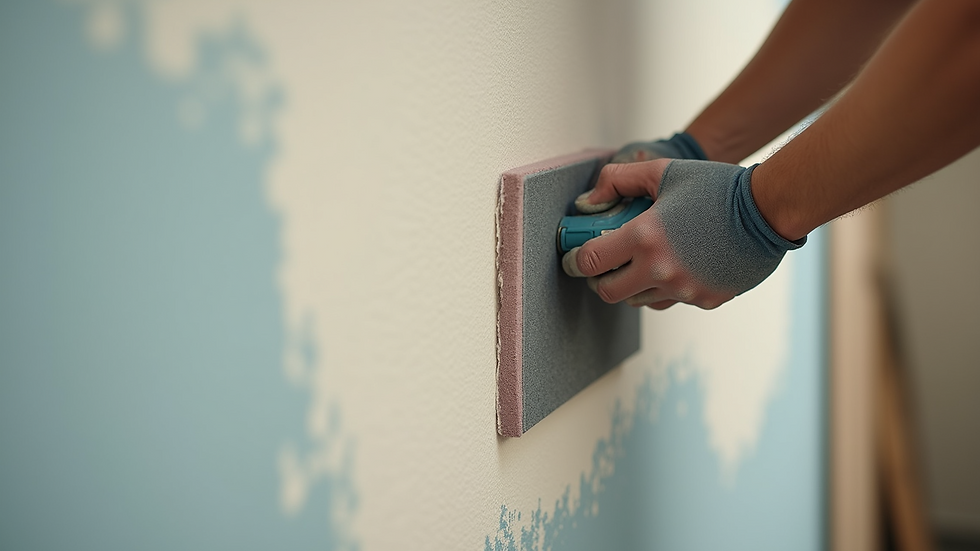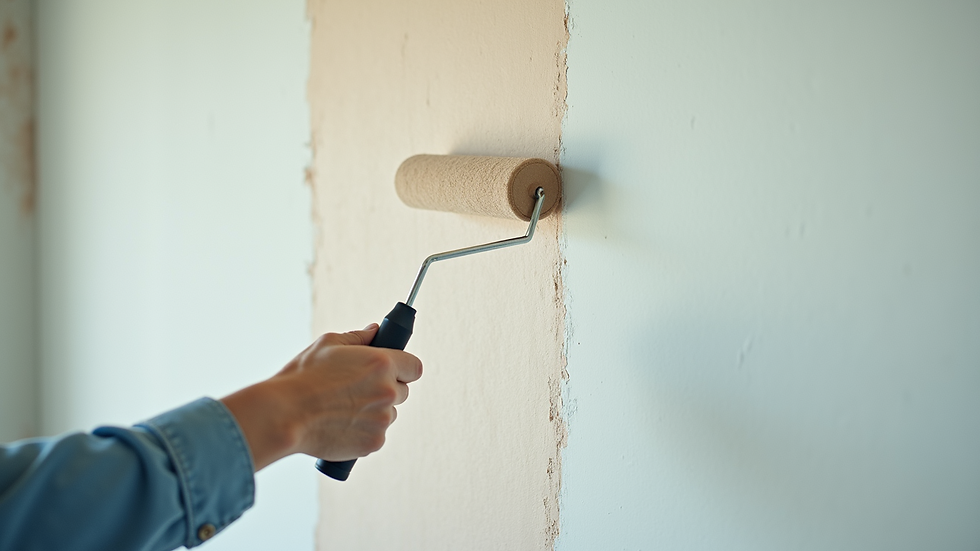Proven Interior Painting Techniques for Perfect Results
- Ken Burrows
- Oct 13
- 4 min read
Achieving a flawless interior paint job requires more than just picking the right color. It demands a clear understanding of the techniques that ensure durability, smoothness, and a professional finish. I have worked extensively with commercial and industrial properties, and I know that the right approach can save time, reduce costs, and enhance the overall appearance of any space. This guide shares proven methods that deliver effective interior painting results every time.
Preparing Surfaces for Effective Interior Painting
Preparation is the foundation of any successful painting project. Without proper surface preparation, even the best paint will fail prematurely. I always start by inspecting walls, ceilings, and trim for damage such as cracks, holes, or peeling paint. These imperfections must be repaired before painting begins.
Cleaning: Remove dirt, grease, and dust using a mild detergent solution. This step ensures paint adhesion.
Sanding: Smooth rough areas and feather edges of old paint to create an even surface.
Patching: Use spackle or joint compound to fill holes and cracks. After drying, sand the patches flush with the wall.
Priming: Apply a primer suited to the surface type. Primer seals porous materials and improves paint coverage.
Proper preparation reduces the risk of peeling, blistering, and uneven color. It also extends the life of the paint job, which is critical for commercial and industrial properties where durability matters.

Tools and Materials for Effective Interior Painting
Selecting the right tools and materials is essential for achieving a professional finish. I recommend investing in quality brushes, rollers, and painter’s tape designed for commercial-grade work. The choice of paint also plays a significant role.
Brushes: Use angled sash brushes for cutting in around edges and trim. Synthetic bristles work well with latex paints.
Rollers: Choose roller covers with the appropriate nap length based on the wall texture. Smooth surfaces require short nap rollers, while textured walls need longer nap.
Painter’s Tape: High-quality tape prevents paint bleed and creates sharp lines.
Paint: Opt for commercial-grade latex or acrylic paints with low VOCs for better durability and environmental compliance.
Using the right tools reduces application time and improves the final appearance. It also minimizes cleanup and touch-ups, which is important for maintaining operational efficiency in commercial settings.

What is the Best Technique for Painting Walls?
The best technique for painting walls combines careful cutting in with efficient rolling. I follow a systematic approach to ensure even coverage and avoid streaks or lap marks.
Cutting In: Start by painting a 2-3 inch border along edges, corners, and around fixtures using a brush. This step frames the wall and prevents roller overlap on edges.
Rolling: Use a roller to fill in the large areas. Apply paint in a “W” or “M” pattern to distribute paint evenly. Then, fill in the gaps with vertical strokes without lifting the roller.
Maintain a Wet Edge: Always work from a wet edge to avoid visible lines where paint dries unevenly.
Multiple Coats: Apply at least two coats for uniform color and durability. Allow proper drying time between coats.
This technique balances precision and speed, making it ideal for large commercial spaces where time and quality are both priorities.

Managing Drying Times and Environmental Conditions
Drying time and environmental factors significantly affect the quality of a paint job. I monitor temperature, humidity, and ventilation closely during every project.
Temperature: Ideal painting temperatures range between 50°F and 85°F. Extreme cold or heat can cause paint to dry too slowly or too quickly, leading to defects.
Humidity: High humidity slows drying and can cause paint to remain tacky. Use dehumidifiers or fans to control moisture levels.
Ventilation: Proper airflow helps paint dry evenly and reduces fumes, which is especially important in occupied commercial buildings.
Patience during drying phases prevents issues like bubbling, cracking, or uneven sheen. It also ensures that the finish remains intact under heavy use.
Tips for Painting Trim and Ceilings
Trim and ceilings require special attention to detail. I use specific techniques to achieve clean lines and smooth finishes.
Trim: Use painter’s tape to protect walls and floors. Paint trim with a high-quality brush, applying thin, even coats. Sand lightly between coats for a smooth finish.
Ceilings: Use a roller with an extension pole to reach high areas. Start painting from the corner and work across in sections. Use a flat or matte finish to hide imperfections.
These steps help maintain a professional look and protect surfaces from damage during the painting process.
Why Professional Interior Painting Techniques Matter
Using proven interior painting techniques ensures that the paint job lasts longer and looks better. For commercial and industrial properties, this means less frequent maintenance and a more attractive environment for tenants and customers. It also reflects well on property management, showing a commitment to quality and care.
Professional techniques reduce waste, lower labor costs, and minimize disruptions. They also help comply with safety and environmental standards, which are critical in commercial settings.
Final Thoughts on Achieving Perfect Interior Paint Results
Mastering effective interior painting requires attention to detail, the right tools, and a methodical approach. From surface preparation to final touches, every step influences the outcome. By following these proven techniques, property owners and managers can enhance the value and appearance of their spaces with confidence.
Investing in quality materials and skilled labor pays off in the long run. A well-executed paint job not only improves aesthetics but also protects surfaces and reduces future repair costs. For commercial and industrial properties, this translates into a better return on investment and a more professional image.


Comments